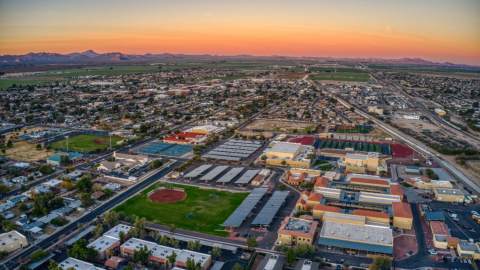New ULI & PwC Report in Emerging Trends in Real Estate Delivers Optimistic Outlook for 2023 & Beyond
The 44th report on Emerging Trends in Real Estate — published jointly by Pricewaterhouse Coopers (PwC) and the Urban Land Institute (ULI) — was recently released. It provides an in-depth outlook on real estate investment, development trends, capital markets, property sectors, metropolitan areas, and other real estate issues to watch throughout the United States and Canada in 2023 and beyond.
Notably, this report reflects the views of individuals who completed surveys or were interviewed as part of the research process. Participants represented a wide range of industry experts, including investors, fund managers, developers, property companies, lenders, brokers, advisers and consultants.
Below is a brief summary of the report’s general conclusions, as well as some of the key emerging trends for office space in 2023.
Despite Some Persistent Challenges, the Long View Remains Positive Overall
The realization of immediate inconvenience in early 2020 quickly grew into loud warnings of doomed markets at the start of the pandemic. Yet, the reality that has since unfolded has proven that things are more adaptable and resilient than they seemed in that momentary agitation. In fact, the report noted that U.S. commercial property markets actually saw some of the strongest returns, rent growth and price appreciation rates ever recorded.
Of course, this has not been consistent across all property types and all markets: Some of the strongest gateway markets in the U.S. experienced sharp outflows of residents and businesses. At the same time, some commercial sectors faced larger and more sustained challenges than others. However, overall, property markets across much of the United States significantly outperformed expectations.
Meanwhile, market changes that resulted from pandemic safety measures and wide-ranging shifts in behavior continue to influence everything from shopping to business travel and office space. For instance, the report noted that, despite current and near-term challenges, most of the commercial real estate professionals who were interviewed remained relatively upbeat about longer-term prospects. In fact, there’s notable optimism — albeit cautious — that near-term slumps will be overcome and that we’re generally well-positioned to expect another period of sustained growth and strong returns.
Additionally, respondents expressed a significant willingness to look beyond some of the cyclical headwinds and, instead, focus on what have been encouraging signs of enduring economic strength. Specifically:
- Despite a modestly declining gross domestic product (GDP) during the first half of the year, the gross national income has been positive.
- Although consumer confidence has shown a sharp decline during the last year, consumer spending was positive every month through July of this year.
- Strong job growth continues and unemployment claims have been at their lowest since the 1960s.
Likewise, inflation is understood to take longer to tame than would be ideal. That said, survey participants mostly agreed that, even if it were to dip into a recession, the downturn would more likely be short and shallow — and perhaps serve as a healthy, corrective cycle or reset that could present more opportunities than uncertainties.
Emerging Office Trends in 2023: Exploring Hybrid Opportunities & Optimizing the National Office Stock
Pandemic-induced structural shifts in where and how we live, work and entertain seem to be here to stay — at least to some extent. Although the effect on office use and leasing is still evolving, a hybrid state of affairs looks likely to endure and transform some aspects of the industry going forward.
For example, while the office space maintains a central role in work culture, the potential to save on occupancy costs — as well as worker demands for more flexibility to improve non-work life priorities — also hold significant weight. Granted, one size certainly does not fit all, and specifics will vary depending on the unique balance between needs and possibilities of each business. But, overall, we’re likely to see more exploration of various hybrid working arrangements facilitated by the rapidly improving variety of options in terms of meeting, communication and remote work technology.
Accordingly, experts interviewed for this report largely agreed that, no matter where office use trends settled in the coming years, office property overall would have to go through an optimization phase. Some believe that might translate to the transformation, removal or repurposing of some of the existing stock. And, although the office and retail sectors have not been feeling demand for new space as intensely as residential and industrial property, they are by no means forsaken. In fact, the experts noted that the demand for well-located, top-quality office and retail space was as strong as ever. In particular, they reported that tenants and investors were increasingly focused on newer, more modern buildings, and were mostly leaving pre-1990 properties behind.
To that end, the U.S. office sector experienced its greatest construction boom in the 1980s, which means that a significant portion of assets are now becoming functionally obsolete. Fortunately, this can present a timely opportunity to accommodate the rising interest in non-traditional commercial real estate product types and niche assets, such as data centers, medical office, self-storage and life sciences office space.
Visit and download the full ULI and PwC report for a detailed account of expert and investor perspectives regarding current and future performance across all U.S. commercial real estate asset types.










